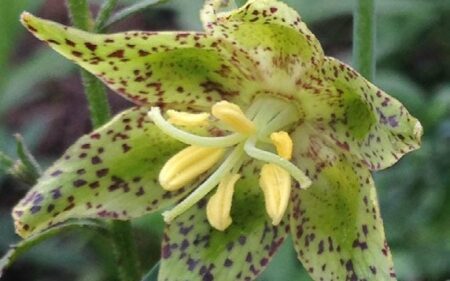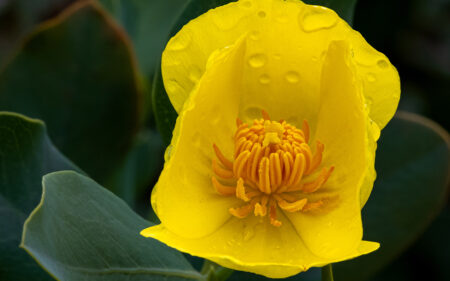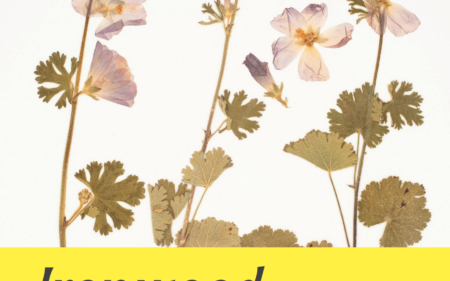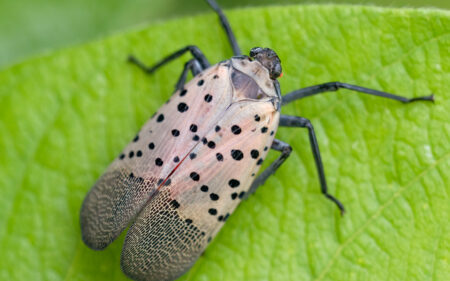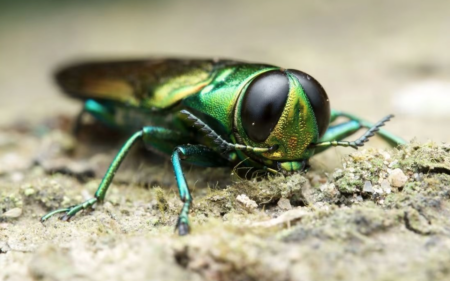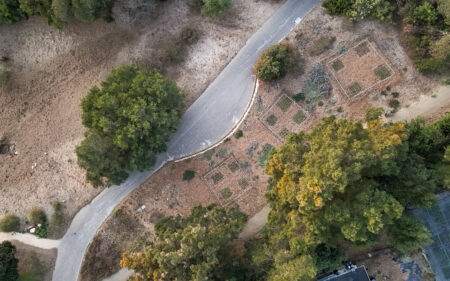The Bug Report: Welcoming Two New Invertebrate Ecologists to the Garden
Insect pollinators and other invertebrates have two new allies at the Santa Barbara Botanic Garden, with the hire of Invertebrate Ecologists: Dr. Zach Phillips and Dr. Sarah Cusser. This brings the number of “bug” scientists at The Garden to four, along with Conservation Technician Kylie Etter and Director of Conservation and Research Dr. Denise Knapp. But why are there bug scientists at a botanic garden, you may be wondering? The short answer is they are excellent indicators of ecosystem health, which starts with native plants. Now here’s the long answer.
Native plants are the foundation of the web of life (at the macro level, at least.) Because they can literally transform air into food, the rest of us rely on them – from the many different insects that feast directly on their leaves, stems, and flowers, to the other insects, mice, and lizards that prey on those insects, to the foxes and coyotes that prey on those creatures, and so on. But plants resist being eaten (wouldn’t you?) by producing chemicals, tough structures like spines and hairs, and more – which the insects find ways to work around, in an ongoing arms race. Because this looks different for different plants and insects in different places, it leads to plant-eaters, or herbivores, being specialized to their preferred plant.
Take the gall midges (a type of small fly in the family Cecidomyiidae,) one of the most species-rich groups in the entire animal kingdom. The larvae of most gall midges feed within the plant tissue, leading the plant to create abnormal growths called galls. They can take all kinds of different shapes and colors, depending on the plant and the midge. These relationships are so specific that gall midge species are typically named for their plant host: Asphondylia ceanothi for the Ceanothus bud gall midge and Dasineura lupinorum for the lupine leaf gall midge, for example. Note that not only are they specific to the plant, but they are specific to the part of the plant that they are adapted to feed on.
Insects and other invertebrates are such good indicators of ecosystem health because they are hyper-diverse and they respond quickly to changes. What’s more, they do a lot of really important jobs, like recycling nutrients, pollinating about a third of our food, dispersing seeds, and providing food for other animals. Because of this, they can tell us if nature’s benefits, or ecosystem services, are being provided in a system that is, say, degraded by invasive species – or in a habitat that we’re trying to restore.
So why are there bug scientists at a botanic garden again? In the Conservation and Research department, we work to understand biodiversity, protect and recover rare plants, and restore habitats. Our invertebrate work can fall into any of those categories. Because invertebrates are so poorly known (it’s estimated that there is 7 to 8 times the number of undescribed species as those that have been described), we’re still in the era of exploration and discovery for those organisms. But at the same time, to save our biodiversity while tackling the climate crisis, we are also squarely in the era of habitat restoration. Invertebrates can help us to do a better job at that because they are such good indicators.
Now, back to those new Invertebrate Ecologists. Our survey, rare plant, and habitat restoration work involving invertebrates has grown so much in recent years that we needed two: one to lead our pollinator projects (Dr. Cusser), and one to lead our island and urban biodiversity studies (Dr. Phillips). You can think of them as the pollinator lady and the creepy crawly guy!

Zach Phillips has a doctorate in Ecology, Evolution, and Behavior from the University of Texas, Austin, where he has been studying symbioses (beneficial interactions) between ants and cockroaches. He received his bachelor’s degree at UC Santa Barbara, where he assisted in projects studying the sandy beach food web (with Dr. Armand Kuris), the effects of an invasive ice plant on arthropod communities (with then doctorate student Denise Knapp), and the beetles of the California coast. He just joined us on October 4, and one of his first projects will be to complete processing specimens from our Terrestrial Invertebrate Survey of San Clemente Island. Through that project, we’re not only helping the U.S. Navy to understand its island’s invertebrates, but also learning more about the plants and habitats that they are associated with. We’ve also collected the data in such a way that we can repeat the study in the future to assess changes in climate and habitat restoration.

Sarah Cusser also received her doctorate in 2018 from the University of Texas in Austin, after studying pollinators in human-altered landscapes. Her master’s degree (from Ohio State University) explored pollinator responses to different habitat restoration techniques. She has had a wide variety of other work experiences involving pollinators, agriculture, and habitat restoration, and has held two post-doctoral positions since receiving her doctorate. One of Sarah’s first projects will be a habitat restoration experiment at the Carrizo Plain National Monument in San Luis Obispo County for the Bureau of Land Management. That study will aim to benefit the Federally Endangered California Jewelflower (Caulanthus californicus) by studying the network of pollinators that use both the Jewelflower and its associated plant species. We’ll use this information to design restoration treatments with different plant mixes, then see which benefits the Jewelflower the most. Sarah starts her position in February.
Both Zach and Sarah will also be growing our work studying and promoting native plants in urban landscapes. Because the plants and insects native to a place have evolved together, growing those natives is the best way to build habitat in your home landscape. It’s also a great way to save water, avoid fertilizers and pesticides, and celebrate our state’s heritage. In this way, we can all do our part to combat the dual threats of biodiversity loss and climate change, and build resilience to whatever comes our way. Watching all of the interesting critters that colonize, you’ll also have a ton of fun in the process.

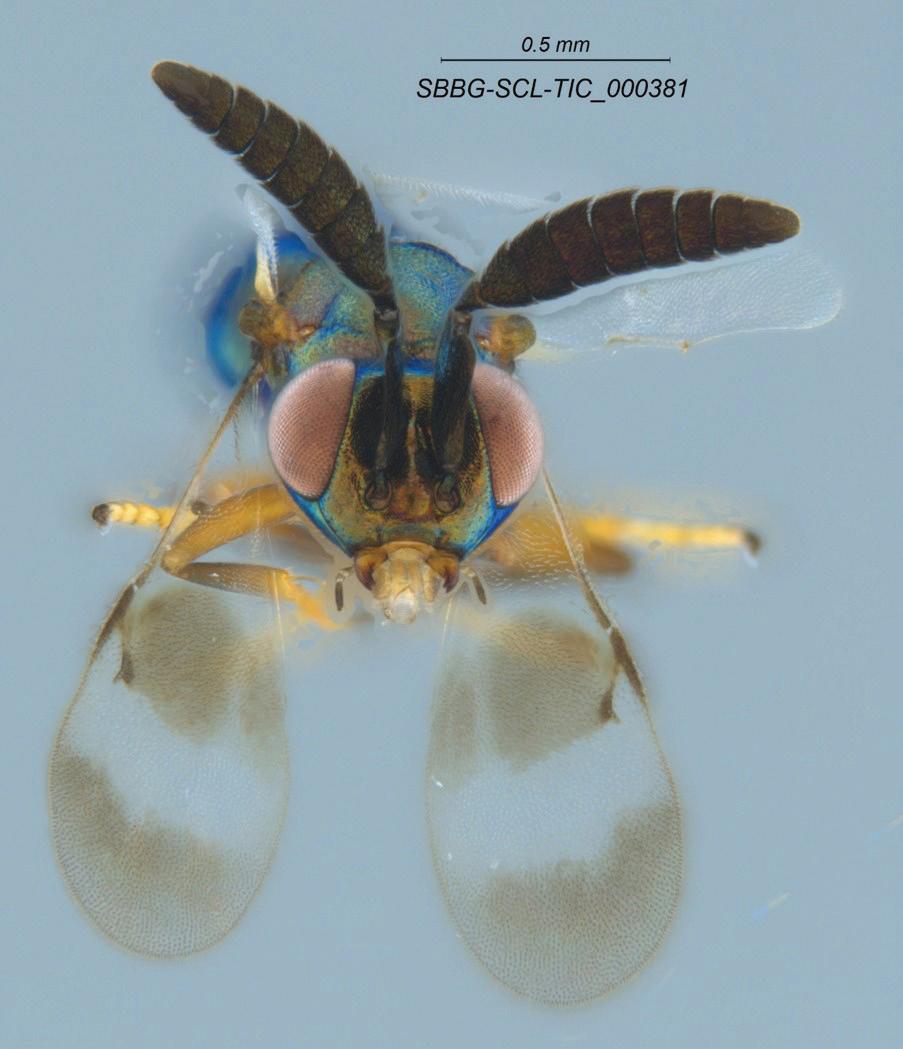

 Donate
Donate